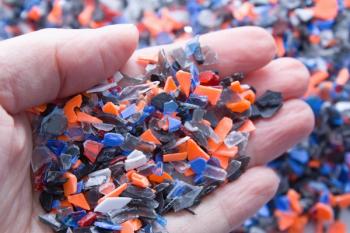
Ignite Your Environmental Analysis With the Latest ICP-MS Technology
Webinar Date/Time: Fri, Dec 6, 2024 11:00 AM EST
Discover how to transform your environmental elemental analysis workflows with right-first-time analysis. This event will demonstrate how the latest ICP-MS systems provide outstanding productivity with simplicity for laboratories carrying out analysis of soils and waters for trace elements.
Register Free:
Event Overview:
ICP-MS instruments are indispensable tools for trace elemental analysis in the environmental industry, renowned for their multi-element capabilities and their proficiency in detecting toxic elements at levels well below regulatory requirements. As regulations become increasingly stringent and new applications emerge, the performance of these instruments has evolved to meet these heightened demands. However, the challenges posed by high-matrix samples and the need for maximum instrument uptime continue to be significant hurdles for many laboratories.
Join us for this presentation which will demonstrate how the Thermo Scientific iCAP MX Series ICP-MS is an ideal analysis tool for high-throughput regulated environmental laboratories. Discover how this robust instrument can simplify environmental workflows. Our experts will, illustrating with examples, covering a number of different environmental regulations and methods.
Key Learning Objectives:
- Optimize your environmental ICP-MS workflows for improved efficiency
- Gain confidence in analysis of high matrix samples such as soil digests
- Maximize instrument up-time and productivity regardless of sample type
Who Should Attend:
- Laboratory managers
- Instrument operators
Speakers:
Matthew Cassap
Product Marketing Manager
Thermo Fisher Scientific
Matthew Cassap joined Thermo Fisher Scientific as an applications specialist in 2006. In this role, he became an expert in trace element analysis applications across a broad range of industry segments using various liquid/solid sampling accessories and hyphenated techniques. In 2012, Matthew assumed responsibility for the Thermo Scientific ICP-OES product line, based at the manufacturing facility in Cambridge, UK. In 2014, Matthew moved to the Thermo Scientific Center of Excellence in Bremen Germany as Product Manager for AA and ICP-OES. Since 2018, Matthew has been based in the UK as a product marketing manager for AA, ICP-OES, and MS.
Daniel Kutscher
Application Manager
Thermo Fisher Scientific
Dr. Daniel Kutscher manages the Application Development for trace elemental analysis and GC/GC-MS products at Thermo Fisher Scientific. After graduation in Chemistry in 2007, Daniel obtained his PhD from the University of Oviedo in 2011. In the same year, he joined Thermo Fisher Scientific and has had different roles in application development and marketing.
Register Free:
Newsletter
Get essential updates on the latest spectroscopy technologies, regulatory standards, and best practices—subscribe today to Spectroscopy.




